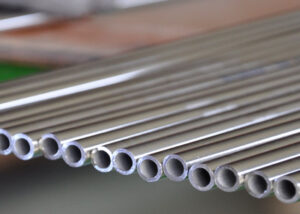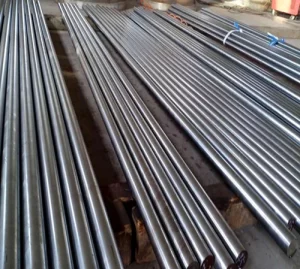Introduction
In the realm of metallurgy, the nuances of alloy composition are akin to the strokes of an artist’s brush, crafting a masterpiece of properties and performance. The carbon content within stainless steel alloys holds a pivotal role, dictating strength, hardness, and resilience. Enter the captivating 410 stainless steel, a metallurgical marvel celebrated for its diverse attributes. In this comprehensive article, we embark on a journey to dissect the intricate relationship between carbon content and the properties of 410 stainless steel, exploring its composition, mechanical traits, corrosion resistance, heat treatment, and the orchestration of carbon’s symphony within this alloy.
1. The Metallurgical Overture: Carbon Content’s Role
 Carbon content acts as the maestro, influencing the harmonious interplay of properties within stainless steel alloys.
Carbon content acts as the maestro, influencing the harmonious interplay of properties within stainless steel alloys.
2. The Essence of 410 Stainless Steel: Composition and Overview
410 stainless steel’s composition comprises a delicate blend of elements:
- Chromium (Cr): 11.5% – 13.5%
- Carbon (C): 0.08% – 0.15%
- Manganese (Mn): Up to 1.0%
- Silicon (Si): Up to 1.0%
- Phosphorus (P): Up to 0.04%
- Sulfur (S): Up to 0.03%
The carbon content’s influence on the alloy’s properties is profound.
3. Carbon’s Grip on Strength: Hardness and Toughness
Carbon is the architect of strength and hardness:
- Hardness Amplification: Increased carbon content elevates hardness, essential for wear resistance.
- Toughness Trade-Off: However, excessive carbon can reduce toughness, necessitating a balance.
4. Dance of Corrosion: Carbon’s Influence on Resistance
Carbon plays a role in corrosion resistance:
- Chromium Synergy: Carbon forms carbides that enhance the corrosion resistance imparted by chromium.
- Localized Corrosion: High carbon content can lead to sensitization and localized corrosion vulnerabilities.
5. Tempering the Symphony: Heat Treatment and Carbon’s Role
Heat treatment conducts a symphony of carbon transformations:
- Quenching: Rapid cooling during heat treatment enhances hardness.
- Tempering: Controlled heating and cooling balance hardness and toughness.
6. Fine-Tuning with Alloying Elements
Carbon collaborates with other alloying elements:
- Chromium: Creates a protective oxide layer for corrosion resistance.
- Manganese: Enhances strength and formability.
- Nickel: Augments toughness and impact resistance.
7. Crafting Complexity: Mechanical Properties and Carbon
Carbon content influences a spectrum of mechanical properties:
- Elastic Modulus: Carbon’s influence on stiffness and elasticity.
- Yield Strength: How carbon content impacts the onset of plastic deformation.
- Ductility: The balance between carbon and ductility.
8. The Carbon Equation: Finding Balance for Optimal Properties
Carbon content requires careful calibration:
- Strength and Toughness: Striking the right balance for desired strength and toughness.
- Corrosion Resistance: Managing carbon for optimal corrosion resistance.
9. Beyond the Microscope: Real-World Performance
 Real-world applications exemplify carbon’s impact:
Real-world applications exemplify carbon’s impact:
- Cutlery: Carbon content’s role in crafting sharp and durable cutlery edges.
- Industrial Machinery: Carbon’s influence on mechanical parts and performance.
10. Expert Musings: Metallurgists’ Insights
Experts delve into carbon’s role in 410 stainless steel:
- Optimal Content: Balancing carbon for desired mechanical and corrosion properties.
- Heat Treatment Mastery: Harnessing carbon’s transformations through precise heat treatment.
11. Shaping the Future: Innovations in Carbon-Enhanced Alloys
Innovations push the boundaries of carbon’s impact:
- Nanostructured Alloys: Carbon’s role in enhancing material strength at nanoscales.
- High-Entropy Alloys: Exploring unique alloying concepts for enhanced properties.
12. Frequently Asked Questions (FAQ)
Q1: Does higher carbon content always mean better strength?
A1: Not necessarily. While higher carbon content can increase strength, a balance must be struck to avoid compromising toughness.
Q2: How does carbon content affect heat treatment?
A2: Carbon content influences the hardenability and tempering response during heat treatment, affecting hardness and toughness.
Q3: Can excessive carbon content lead to corrosion susceptibility?
A3: Yes, excessive carbon content can promote sensitization and localized corrosion vulnerabilities in stainless steel.
Q4: What factors should be considered when determining the optimal carbon content?
A4: Desired mechanical properties, corrosion resistance requirements, and heat treatment considerations influence the optimal carbon content.
Q5: Are there any challenges in working with higher carbon content alloys?
A5: Yes, challenges such as reduced ductility and increased brittleness can arise when working with higher carbon content alloys.
Conclusion
Carbon content wields a transformative influence on the properties of 410 stainless steel, shaping its mechanical prowess, corrosion resistance, and overall performance. As the maestro of metallurgy, carbon orchestrates a symphony that marries strength with toughness, elegance with durability. From the crafting of cutlery edges to the innovation
